The race of the activewear brands: how to triumph over your competitors
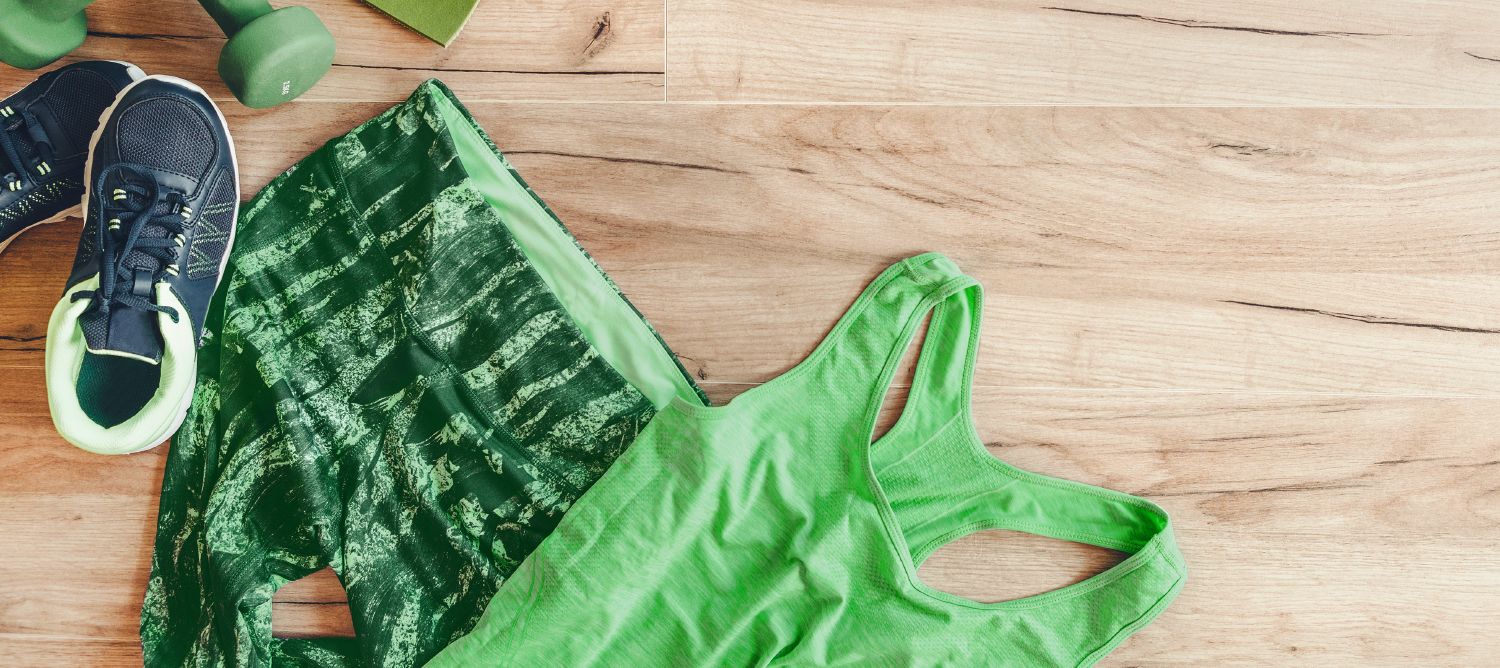
By Rachael Williams, Commercial Associate
Over the last few years, fast fashion has become a huge topic of controversy – and in order to appeal to a younger generation of ethically minded consumers, many fashion brands have made efforts to become more sustainable.
Traditional activewear brands such as Nike and Adidas have had to step up their game, and in 2019 a new competitor entered the market, Tala – a sustainable activewear brand founded by popular influencer Grace Beverley.
I wanted to investigate how Tala have positioned themselves in a market dominated by giants. I was interested to see how they’ve managed to compete against well-loved activewear brands who were also founded by young entrepreneurs – Sweaty Betty and Gymshark, and then against another sustainable fashion brand – in this case Pangaia.
Using Relative Insight, a unique text analysis platform, I sought to do a bit of competitor benchmarking. To do this, I compared Trustpilot reviews from products across each brand and then compared them – this helped me spot the differences in what consumers are saying about each. Relative Insight pinpoints the statistically significant differences in language between two or more data sets, and by digging deeper into these organic conversations, brands can better understand how they are perceived against their competitors.
Tala vs Sweaty Betty
Tala’s clothing ranges were praised by customers for making them look good, and reviews were 4.8x more likely to talk about shape, and 10x more likely to talk about how flattering the clothing is. In fact, consumers were 18.3x more likely to use the term “super flattering” in comparison to Sweaty Betty.
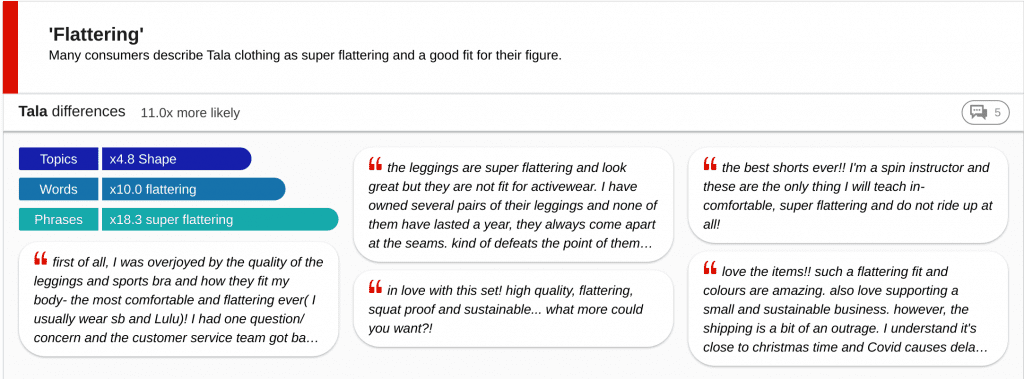
However, Tala consumers often commented on the fit of the waistbands of leggings, and the word “compressed” was seen to be used 26.1x more, suggesting consumers felt the leggings were restricting, with 41x more mentions describing the leggings as uncomfortable.
Customers of Sweaty Betty were overall very positive about the brand; however they did complain of technical issues with applying discount codes at checkouts, which by analysing the language more – we found were often resolved by their great customer service team.
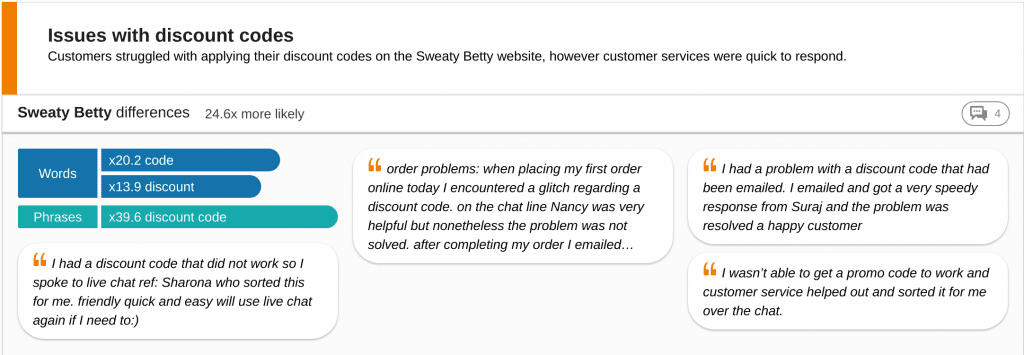
Tala Vs Gymshark
In comparison to Tala, Gymshark customers talk 2.6x more often about how likely they are to recommend the brand to their family and friends. With next day delivery and an “amazing customer experience“, they give Gymshark “a 10/10“.
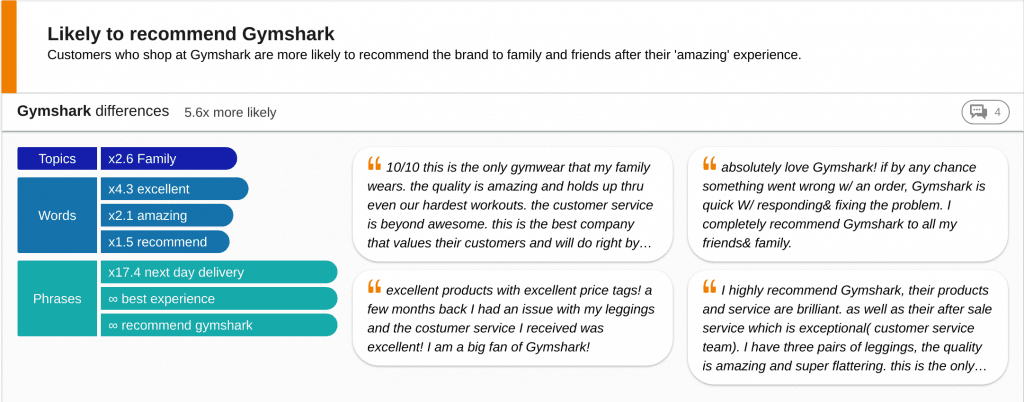
However, and ironically, when some customers have experienced issues with Gymshark we noticed a lot of points made in reviews about how they wish they could contact them on the phone. These customers talk about their frustration 11.3x more often than Tala customers, which shows how polarising Gymshark’s customer service proves to be.
Whilst Tala consumers are 5.1x more likely to discuss the texture of Tala’s clothing, I saw them describing how the materials are “super soft” , but also rather thick. Some people loved these qualities in their workout wear, others strongly disliked it complained about it.
Tala vs Pangaia
Perhaps because it’s such a relatively new brand, and sustainability is such a controversial topic, I found that consumers were 5.2x more likely to discuss Tala’s ethics in comparison to Pangaia’s. Pangaia is so well known for its stance on sustainability that perhaps Tala could benefit from re-establishing its own positioning and sustainable USP.
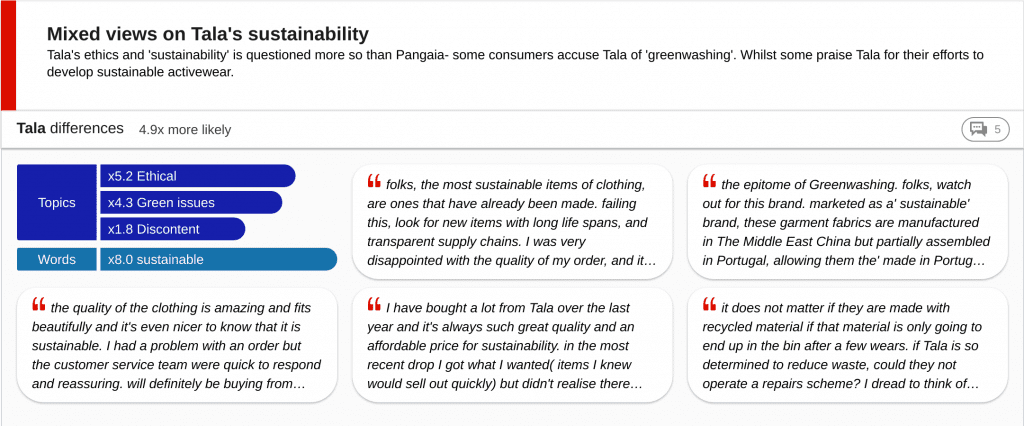
By comparing and analysing the language used in forums in this way, fitness brands can discover powerful linguistic insights which enable them to track how people perceive their brand in comparison to their competition. Comparison also helps to understand the strengths and weaknesses of competitors in order to find a gap in the market and to enhance marketing strategy.
Check out Relative Insight’s webinar that explored the constantly shifting discourse around sustainability – access all related content, and watch on-demand.
